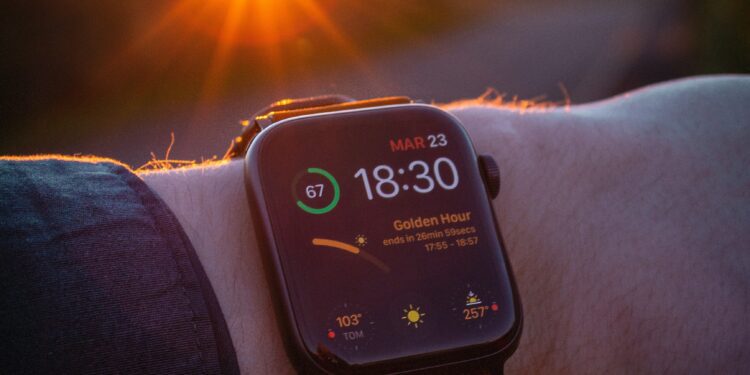A subtle vibration can steady a hand yet unvoiced hazards accompany this new pulse. On July 2, the U.S. Food and Drug Administration granted 510(k) clearance to the Felix NeuroAI Wristband, marking the first AI-guided, noninvasive neuromodulation device for essential tremor. The approval, grounded in the randomized, double-blind TRANQUIL trial (ClinicalTrials.gov Identifier: NCT06235190), spurred excitement across neurology forums and wearable-tech communities while also igniting debate about the long-term impact of continuous peripheral nerve stimulation.
Essential tremor afflicts roughly seven million Americans—seven times the prevalence of Parkinson’s disease—and can hamper daily activities such as eating, writing, and dressing. Traditional treatments, including propranolol or primidone, help fewer than half of those afflicted and risk undesirable side effects such as fatigue and dizziness. Surgical options like deep brain stimulation (DBS) demonstrate efficacy but require invasive intervention and carry procedural risks. The Felix wristband, by contrast, offers on-demand therapy via a lightweight bracelet that delivers tailored electrical pulses, all managed through proprietary AI algorithms hosted on a cloud platform.
TRANQUIL Trial Demonstrates Efficacy
The FDA’s decision hinged on data from TRANQUIL, a multicentre study that enrolled 125 adults with moderate to severe essential tremor. Participants wore either the Felix NeuroAI Wristband or a sham device for waking hours over 90 days. The primary endpoint—change in the modified Activities of Daily Living (mADL) score from the Tremor Research Group Essential Tremor Rating Assessment Scale—revealed a 6.9-point mean reduction in the Felix cohort versus 2.7 points in controls (P < .0001) (eMPR.com). Nearly 67 percent of treated subjects achieved at least a 20 percent improvement in daily function, compared to 25 percent of the sham group.
Secondary outcomes—clinician-reported improvements, patient-assessed quality-of-life gains, and objective accelerometry measures—corroborated robust tremor suppression. Importantly, the study documented no serious device-related adverse events, with mild skin irritation as the most common complaint.
Adaptive Neuromodulation: A Double-Edged Scalpel
The Felix wristband’s defining feature lies in its adaptive stimulation. Integrated sensors detect tremor frequency and amplitude, relaying data to an AI engine that modulates pulse intensity and timing throughout the day. This closed-loop approach aligns with emerging paradigms in bioelectronic medicine, positioning the device as part of a broader shift toward personalized, algorithm-driven therapies.
Yet ethical and safety experts caution that chronic nerve stimulation may carry unforeseen consequences. Animal models suggest that repetitive electrical pulses can induce nerve desensitization or morphological changes in peripheral fibers. In human DBS, long-term follow-up has occasionally revealed tolerance development, necessitating periodic adjustment of stimulation parameters. Whether peripheral neuromodulation replicates those patterns remains unknown, underscoring the need for vigilant post-market surveillance.
Regulatory Path and Post-Market Vigilance
The FDA’s 510(k) clearance indicates that the Felix device is substantially equivalent to predicates in the neuromodulation class but does not imply long-term safety assurances. Fasikl, the Minnesota-based developer, has committed to a phase 4 registry and active post-market studies to track real-world performance, adverse-event rates, and patient adherence. The company expects prescription availability in select U.S. regions by late 2025, with broader rollout slated for 2026.
Healthcare networks and payer alike will scrutinize both cost-effectiveness and safety. While the device eliminates pharmaceutical expenses and surgical overhead, insurers may demand evidence of sustained benefit beyond the three-month trial window. Longitudinal data on dose-adjustment frequency, battery-recharge cycles, and device-related complications will inform coverage decisions and reimbursement rates.
Clinical Community Reaction
Leading neurologists have lauded the innovation yet counsel prudence. Dr. Rajesh Pahwa of the University of Kansas, whose endorsement featured prominently in the Business Wire release, noted that “pharmaceutical options help fewer than 50 percent of patients, and surgical interventions are not suitable for many.” However, in a recent American Academy of Neurology panel discussion, he and peers underscored the necessity of comparative trials against high-dose botulinum toxin and focused ultrasound to delineate relative efficacy and safety profiles.
Risks of Wearable Neuromodulation
Even as users embrace the promise of drug-free relief, potential hazards merit attention:
- Skin Integrity and Infection
Continuous electrode contact risks dermatitis and, in rare cases, superficial infection. Proper hygiene protocols and skin-compatible materials are essential to mitigate these outcomes. - Nerve Desensitization
Persistent stimulation may lead to diminished nerve responsiveness, potentially requiring escalating stimulation parameters that could stress surrounding tissues. - Autonomic Interference
Peripheral nerves influence vascular tone and sweat gland function; unintended modulation could provoke vasomotor instability or altered thermoregulation. - Data Privacy and Security
The device’s reliance on cloud-based AI engenders concerns about patient-data protection. Robust encryption and compliance with HIPAA and GDPR standards are nonnegotiable to prevent unauthorized access. - Overdependence on Algorithm
Clinicians caution that algorithmic decisions should augment—not replace—clinical judgment. Clear guidelines must delineate when manual overrides are warranted.
Economic and Access Considerations
Essential tremor often begins subtly but can progress to severe disability. The Felix wristband carries a projected price tag comparable to a three-month supply of branded pharmaceuticals. For patients without adequate insurance coverage or in underserved regions, cost may pose a barrier. Advocacy groups urge patient-assistance programmes and tiered pricing models to ensure equitable access.
Healthcare systems envision integrating remote monitoring dashboards, enabling neurologists to review stimulation logs and tremor metrics between visits. Such tele-neurology frameworks could reduce clinic burdens and personalize follow-up, though they also require investment in digital-health infrastructure.
Future Directions in Wearable Neurotherapeutics
The Felix approval may catalyse a wave of AI-powered neuromodulation devices targeting diverse movement and neuropsychiatric disorders. Ongoing trials explore applications in Parkinson’s disease bradykinesia, dystonic spasms, and even chronic pain syndromes. As Fasikl and competitors refine machine-learning algorithms, the spectrum of adaptive wearables is poised to expand.
Yet the field must balance innovation with rigorous validation. Randomized, head-to-head studies comparing wearable stimulators with existing therapies will be indispensable. Moreover, international regulatory harmonization—such as mutual recognition of clinical data between the FDA and the European Medicines Agency—could streamline global access while upholding safety standards.
Conclusion
The FDA’s clearance of the Felix NeuroAI Wristband represents a watershed in noninvasive essential tremor management, offering a novel, AI-driven alternative to drugs and surgery. The TRANQUIL trial’s compelling outcomes justify cautious optimism among clinicians and patients alike. Nonetheless, the long-term safety of continuous peripheral neuromodulation remains to be established. As the device enters the marketplace, a coordinated effort involving post-market surveillance, comparative effectiveness research, and robust data security measures will determine whether the promise of adaptive, drug-free tremor control endures—or whether unforeseen risks diminish its potential.















